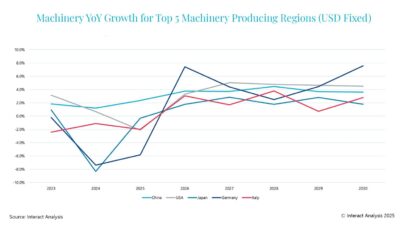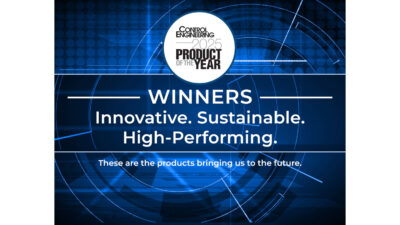More than 700,000 federal technologies and processes, 100,000 researchers, 700 national labs, and 13 government agencies may look like an overgrown jungle maze. If so, the National Technology Transfer Center (NTTC, Wheeling, W.V.) can be seen as a large, sharp machete. For example, one company saved about $10,000 for every hour it spent with NTTC's staffers.
|
More than 700,000 federal technologies and processes, 100,000 researchers, 700 national labs, and 13 government agencies may look like an overgrown jungle maze. If so, the National Technology Transfer Center (NTTC, Wheeling, W.V.) can be seen as a large, sharp machete. For example, one company saved about $10,000 for every hour it spent with NTTC’s staffers.
NTTC was created during 1989-92 after Congress approved the Bayh-Dole Act and Federal Technology Transfer Act sought to “commercialize” unclassified federal technologies. These include devices and processes produced in the national labs and in universities using the approximately $75 billion the U.S. devotes to research each year. Major federal agencies participating in NTTC include NASA, Energy, Defense, Agriculture, Commerce, Transportation, USDA, EPA, and many others. NTTC is a nonprofit organization, located on the grounds of Wheeling Jesuit University.
“We saw many U.S. markets erode in the late 1970s and early 1980s, and people began to ask what was happening to the billions being spent on research,” says Joe Allen, NTTC’s president. “The Acts said federal labs can own their technologies, but are also obligated to partner with U.S. companies to move those technologies to market. However, we found that many companies had a hard time finding and using the right research. Many would make two or three calls and give up. So the NTTC was created to match firms with useful research.”
To begin transferring technology to businesses and manufacturers—including firms in the automation and control fields—NTTC first set up a confidential 800-number-based referral service. Callers work with NTTC technology agents, who search among the government’s database of 700,000 technologies for methods, devices, processes, materials, and equipment that might be useful to the inquiring company.
In control and automation, NTTC is currently helping a Fortune 500 company seek a licensing partner for its new flow control valve. It’s also partnering with a Small Business Innovation Research (SBIR) grantee to develop biosensor devices to measure blood gases. NTTC is also working with mechanical engineers on expert sensors, motion controllers, and control software systems. Mr. Allen says a recent study found that 16% of NTTC’s 16,000 industry clients seeking technology information were involved in control, automation, or instrumentation, and that more than 50% of federal labs have significant expertise in one or more of those three fields.
From referrals to partnerships
The confidential referral service succeeded, but NTTC found that many calls consisted of requests for training and other needs not directly related to the database. “For example, NTTC’s largest sponsor, NASA, had staffers working on commercialization projects, but needed help training them,” says Terry Bradford, NTTC’s vp of commercialization. These calls proliferated, and so NTTC established a training program. This department helps university licensing offices and companies’ intellectual property offices evaluate whether discoveries are patentable, then teaches people there to manage and license the technologies to generate revenue.
“Partnering with business is new for many government people, and so it’s been important for us to train the public sector how to market, negotiate, license, and manage finances from a business perspective. This includes showing specific returns and also making sure U.S. taxpayers benefit from transferring technology to the business world,” says Mr. Allen.
However, while training fills a definite need, NTTC discovered that other callers needed assessments of available technologies and hands-on help turning concepts into marketable products. Many callers from large and small firms also had viable ideas of their own, but simply didn’t have the resources to evaluate and turn them into sophisticated prototypes—essential for generating interest and financing. This led NTTC to create its commercialization center and prototyping lab.
Technology assessment is one of NTTC’s most important jobs because measuring and judging whether a process or device can function is crucial to commercializing it. So, NTTC’s confidential assessments check each technology’s ability to do what it claims; marketability; existing competition; probable life cycle; barriers to production; and expected time to market.
The prototyping lab currently employs 17 people, who work for both government and commercial clients. Mr. Bradford says its recent projects include using equations from the Goddard Space Center to create drawings of a new type of universal gear for the trucking industry. It also expects to receive part of an upcoming SBA grant to help a nearby steel fabricator design nuclear power plant vessels.
“The lab also has a basic outreach effort in plant-floor management, and we’re also talking to the National Electrical Manufacturers Association and other organizations to see what projects we can undertake jointly,” says Mr. Bradford. “We’ve also proposed to a private university medical center to help manage its intelligence products and technology portfolio.”
Besides running its prototyping lab, the commercialization center is also responsible for NTTC’s business incubation program to nurture small firms through outsourcing research, developing products for the government, and securing financing and/or marketing assistance. The center also examines other business opportunities for NTTC, such as ways it can market its own services. “We’re about to announce a strategic alliance with one of the big six accounting firms,” says Mr. Bradford. “We’ll do the technology assessment, and they’ll do the technical valuation, which is assessing the financial value of the technology and the value of licensing it.”
Vice versa commercialization
As it evaluated and commercialized more federal technologies, NTTC began getting requests from companies wanting technology assessments. Businesses realized benefits from using in-house technology portfolios to generate revenue by offering licenses to outside users too. Consequently, NTTC also assesses technologies for Fortune 500 companies to determine value in the same way it conducts assessments for government.
“Just as the government is learning business methods, companies are coming back to the public sector to seek help with research and outsourcing efforts,” says Mr. Allen. “We’re becoming a broker that can not only match companies and government resources as quickly as possible, but can also help set up deals between them.”
As NTTC continues to grow, Mr. Bradford says its technology assessment, strategic partnering, training, and licensing functions will move even further into the private sector. The center will likely use more process enhancement software tools, and work with companies more often via interactive distance learning channels.
Whatever the future holds, Mr. Allen says NTTC will continue making it simpler for companies to increase their competitiveness using federal technologies. “We recently hooked up one Pittsburgh-based company with Lawrence Livermore Labs to improve its manufacturing process,” says Mr. Allen. “The owner told us later that he estimated that he saved about $10,000 for every hour he was on the phone with NTTC.”
For more information, visit www.controleng.com/info .



